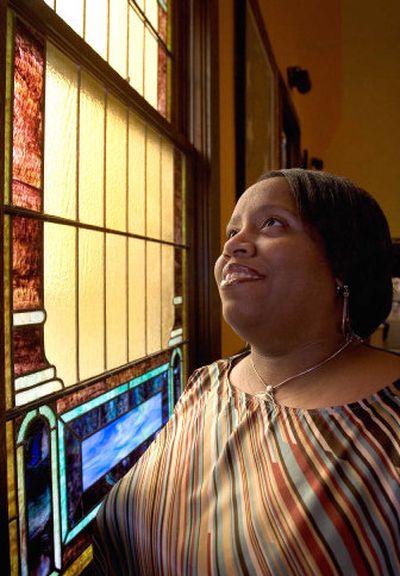Yes, Idaho, you do have black history

BOISE – As the new director of the Idaho Black History Museum, Kimberly Moore’s job starts with convincing almost everybody she talks to that such history actually exists.
“It’s interesting, when you talk to people, what they know or they think they know,” said Moore, who left a job at Detroit’s Motown Historical Museum to take her new position in Boise this month. “African-Americans have made a significant contribution to this state.”
Ask most people in or out of Idaho about the state’s black history, and you’re likely to get a blank look. There just aren’t many black people around – 11,000 is Moore’s estimate, less than 1 percent of Idaho’s 1.4 million population.
But black people have a history in Idaho. It starts with York, a slave who traveled through what is now North Idaho 200 years ago with Meriwether Lewis and William Clark, the first Europeans to record a trip through the area.
The Idaho Black History Museum tells the story of York and of the explorers, fur traders, gold prospectors, miners, ranchers, and others who came after him. Some traveled to Idaho for the same reasons as the rest of the newcomers – such as the Chinese who were looking for work in the mines or on the railroad, the Mormons seeking religious freedom, or the settlers needing land.
Others came for reasons unique to black history – such as a need to escape oppression in the post-Civil War South.
The museum is set in a tiny former black Baptist church – a space that Moore hopes to quadruple in size. Exhibits introduce characters like Gobo Fango, a West African who was born in 1855 and adopted by white Mormons. He started a sheep ranch near Oakley.
There’s a piece on Les Purce, the first black city councilman in Idaho (in Pocatello, in 1973) who went on to become Idaho’s first black mayor in that city. Another covers the visit of famed singer Marian Anderson in 1940. Anderson was snubbed because of her color in other cities during her career, and Boise was no different: Visitors learn Anderson stayed at the Hotel Boise, but on the condition she enter and exit by the back door, and never leave her room when not performing.
The black history in the exhibits is bittersweet, mixing triumphs on the frontier and during World War II with the oppression that was a fact of life.
Idaho’s black history in that respect is no different from that of other states. What sets it apart is the stain left by the infamous Aryan Nations.
That anti-Semitic, white supremacist group was founded by neo-Nazi Richard Butler, who bought 20 acres near Hayden in the mid-1970s. Six years ago Butler declared bankruptcy and gave up his land. He died in 2004 at the age of 86, and the grounds of his compound were turned into a park dedicated to peace.
Even though Butler is associated with Idaho, he wasn’t from the state, noted Janet French, who is on the museum’s board.
“He was basically real estate shopping for some remote place where the federal government would leave him alone,” said French. “My understanding is the locals up in northern Idaho were incensed their character was being tarnished by a bunch of people who weren’t from Idaho in the first place.”
Until news about the Aryan Nations compound spread through the national media, most Americans weren’t accustomed to hearing much about Idaho. It’s a quiet, largely rural state that still produces one-third of the nation’s potatoes, and it has a huge chunk of national forest land in the middle of it. But they heard about Richard Butler, and they remembered.
Moore said friends and relatives in Detroit were alarmed she was considering a job in Idaho; her 87-year-old grandfather warned her about Boise skinheads.
“I said, ‘That’s going to take some getting used to,’ ” Moore recalled.
Moore hasn’t seen any skinheads, and she loved Idaho right away. The museum held a gospel music workshop earlier this month, and she was surprised and moved when 90 percent of the people who turned up were white. That doesn’t happen in places with a large, established black population, said Moore.
“These were just regular everyday folk, not singers, who love gospel music,” Moore said. “People think it’s so backward here. To me, it’s far more progressive here than a big city like Detroit.”
Moore hopes to rehabilitate Idaho’s reputation through her work at the eight-year-old museum. She’s putting on several events in honor of Black History Month and beyond, and she’s increasing educational and community programs to get more schoolchildren through the doors. She wants them to learn about the contributions that black people have made to Idaho and to the world.
“Unlike areas that were heavily populated by African-Americans, I feel that African-American Idahoans had to fight a little harder and they had to be a little better,” Moore said. “It’s easier when you have a million black folks in a city to make sure they are represented, that there are programs, and there are opportunities in every sector. These people had to shine a little brighter, work a little harder, just to get an equal place at the table.”